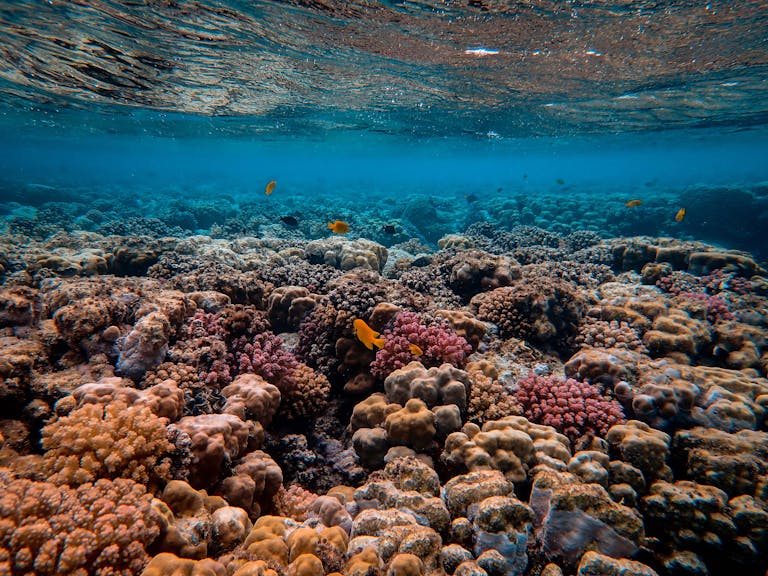New Study Reveals Cold Origins of Primates, Challenging Long-Held Beliefs

For decades, the common belief was that the first primates—our distant evolutionary relatives—emerged in warm, tropical forests. This assumption seemed logical since most primates alive today live in tropical regions, and many primate fossils have been unearthed in such climates.
However, a new study led by Jorge Avaria-Llautureo at the University of Reading and his colleagues has completely overturned this idea. Their findings suggest that primates originated not in lush tropical jungles but in cold, seasonal environments.
This discovery challenges long-standing assumptions about primate evolution and provides new insights into how climate shaped the survival, spread, and adaptation of our earliest ancestors.
It also has important implications for understanding how primates, including humans, might cope with today’s rapidly changing climate.
How the Study Was Conducted
The research team set out to examine the geographic origins of primates and the climatic conditions of the regions where they first appeared. Using a combination of fossil records, climate reconstructions, and advanced modeling, they were able to infer where and under what conditions early primates evolved.
One of their key methods was analyzing fossil pollen and spore data found near early primate fossil sites. These tiny fossils are excellent indicators of ancient climate conditions. By cross-referencing this environmental data with known primate fossils, the researchers reconstructed the most likely climates where early primates lived.
They also used phylogenetic models that combine evolutionary relationships with geography. This approach allowed them to trace not just where primates were found but how their environments shifted over millions of years.
Early Primates Were Tiny and Adaptable
One of the earliest known primates is Teilhardina, a small tree-dwelling animal that lived about 56 million years ago, roughly 10 million years after the extinction of the dinosaurs. This creature weighed only about 28 grams—the same as the world’s smallest living primate today, Madame Berthae’s mouse lemur of Madagascar.
Despite their small size, Teilhardina and other early primates had features that set them apart from other mammals of the time. Notably, they had fingernails instead of claws, an adaptation that helped them grasp branches and handle food more efficiently. Their diet included fruit, gum, and insects, requiring a high-energy intake to fuel their rapid metabolism.
Teilhardina was also remarkable for its rapid geographic dispersal. Fossil evidence shows that it originated in North America but quickly spread across Europe and Asia, even reaching as far as China. This rapid expansion demonstrates that primates were capable travelers, adapting to new and challenging environments.
Cold Climates, Not Tropical Forests
The study’s most surprising revelation is that primates did not originate in tropical forests as previously thought. Instead, they thrived in cold, arid, and seasonal environments.
Fossil evidence combined with climate reconstructions shows that areas where early primates lived were not tropical at the time. For instance, some primates even colonized Arctic regions, enduring seasonal cold and limited food supplies. To survive, they may have relied on strategies still seen in some primates today, such as slowing down metabolism or even hibernating—behaviors observed in dwarf lemurs and mouse lemurs.
The fact that primates managed to adapt to these challenging and unpredictable environments likely played a major role in their evolutionary success. Species that were highly mobile and able to move in search of food and better conditions were more likely to survive and pass on their genes. Those that couldn’t adapt disappeared from the evolutionary tree.
Why Climate Was So Important
Climate has always been a critical driver of evolution. The study found that global warming events did not necessarily accelerate primate evolution. Instead, it was rapid shifts between dry and wet climates that spurred evolutionary change.
When early primates moved into more stable climates, they tended to disperse over larger distances—on average about 561 kilometers—compared to only 137 kilometers when they remained in unstable environments. This suggests that finding new stable habitats was a powerful incentive for migration and expansion.
The ability to adapt to diverse climates gave primates an evolutionary edge. This flexibility may help explain why primates eventually spread into so many regions, evolving into the wide variety of species we see today.
Lessons for Conservation Today
Understanding the origins of primates isn’t just about satisfying curiosity—it has practical implications for the present. Today, primates are under severe threat from climate change, deforestation, and hunting. Many species are losing their habitats and being confined to smaller, fragmented areas. This limits their ability to move and adapt, reducing their genetic diversity and increasing their risk of extinction.
The study highlights that primates owe much of their evolutionary success to mobility and the ability to adapt to changing environments. However, modern human activities are restricting that mobility. For example, when forests are cut down for agriculture, primates can no longer migrate freely to find new food sources or safer habitats.
To protect primates today, conservation strategies must go beyond preserving individual forest patches. They need to ensure connectivity between habitats, enabling primates to move as they once did. At the same time, efforts to reduce bushmeat hunting, combat illegal wildlife trade, and slow climate change are essential.
Broader Perspective: What Makes Primates Unique?
To better understand the importance of this study, it helps to reflect on what defines primates and how they differ from other mammals.
- Grasping Hands and Feet: Early primates had nails instead of claws and opposable thumbs that allowed them to manipulate objects and climb trees.
- Forward-Facing Eyes: This adaptation provided better depth perception, essential for moving through trees and catching prey.
- Large Brains: Even in early primates, brain size relative to body size was larger than in many other mammals, laying the groundwork for complex behaviors.
- Flexible Diets: From fruits and leaves to insects and tree gum, primates could exploit a wide range of food sources.
These traits, shaped by challenging climates, helped primates not only survive but thrive across diverse environments.
How This Study Changes Our Understanding of Evolution
Before this research, the dominant narrative was straightforward: primates arose in tropical forests, adapted to tree life, and expanded as warm climates opened up new habitats. But now we know the story is more complex.
Primates actually began in cold, unstable regions, where survival required ingenuity, adaptability, and mobility. Only later did they expand into the tropical forests we associate them with today.
This shift in understanding reminds us that evolution is rarely linear or simple. It is shaped by constant challenges, unexpected environments, and the ability of species to innovate and adapt.
What This Means for Humans
Since humans are primates, this research also speaks to our own evolutionary history. We often think of human evolution as closely tied to Africa’s tropical savannas and forests. While that remains true for later stages of our lineage, this study shows that our distant ancestors were already masters of survival in difficult, unpredictable climates.
In many ways, this legacy continues today. Human societies still adapt to changing climates, migrate across continents, and develop strategies to survive in extreme environments—from deserts to the Arctic. Our capacity for resilience may trace back to these early evolutionary pressures.
Conclusion
The study by Jorge Avaria-Llautureo and colleagues has shattered long-standing myths about primate origins. Rather than tropical jungles, the earliest primates lived in cold, seasonal, and unpredictable climates. Their survival depended on adaptability, mobility, and resilience—traits that still define primates today.
This finding not only reshapes our understanding of primate evolution but also underscores the importance of protecting primates in the modern world. If primates could adapt to dramatic climate shifts in the past, they might withstand today’s changes—but only if we give them the freedom to move and the habitats to survive.
Research Reference: The radiation and geographic expansion of primates through diverse climates – PNAS (2025)





